-
 © Ford
© Ford -
 © Ford
© Ford -
 © Shannons Insurance
© Shannons Insurance -
 © Classic and Collector Cars
© Classic and Collector Cars -
 © Brightwells
© Brightwells -
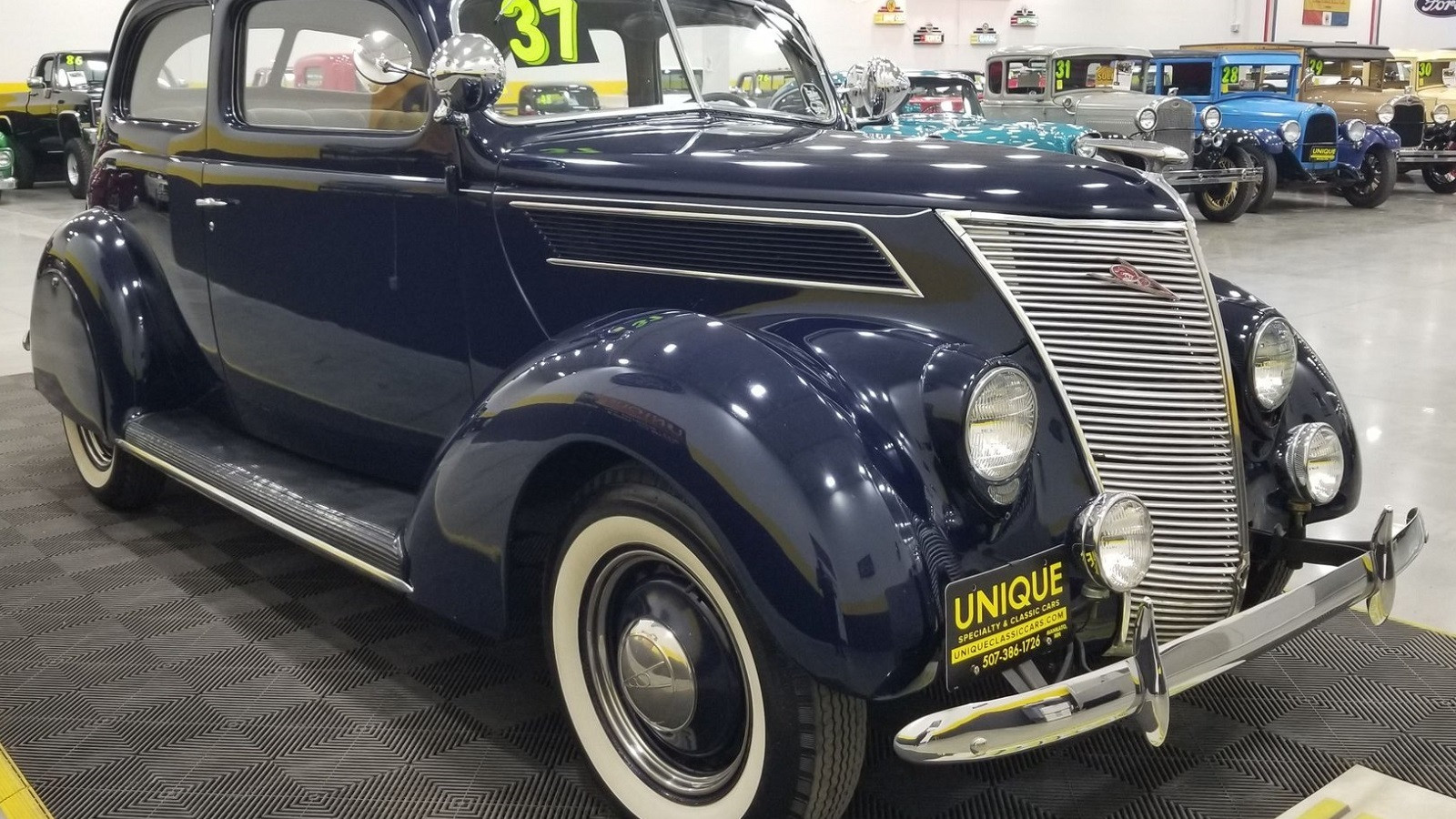 © Unique Classic Cars
© Unique Classic Cars -
 © Manor Park Classics
© Manor Park Classics -
 © Ford
© Ford -
 © Ford
© Ford -
 © Ford
© Ford -
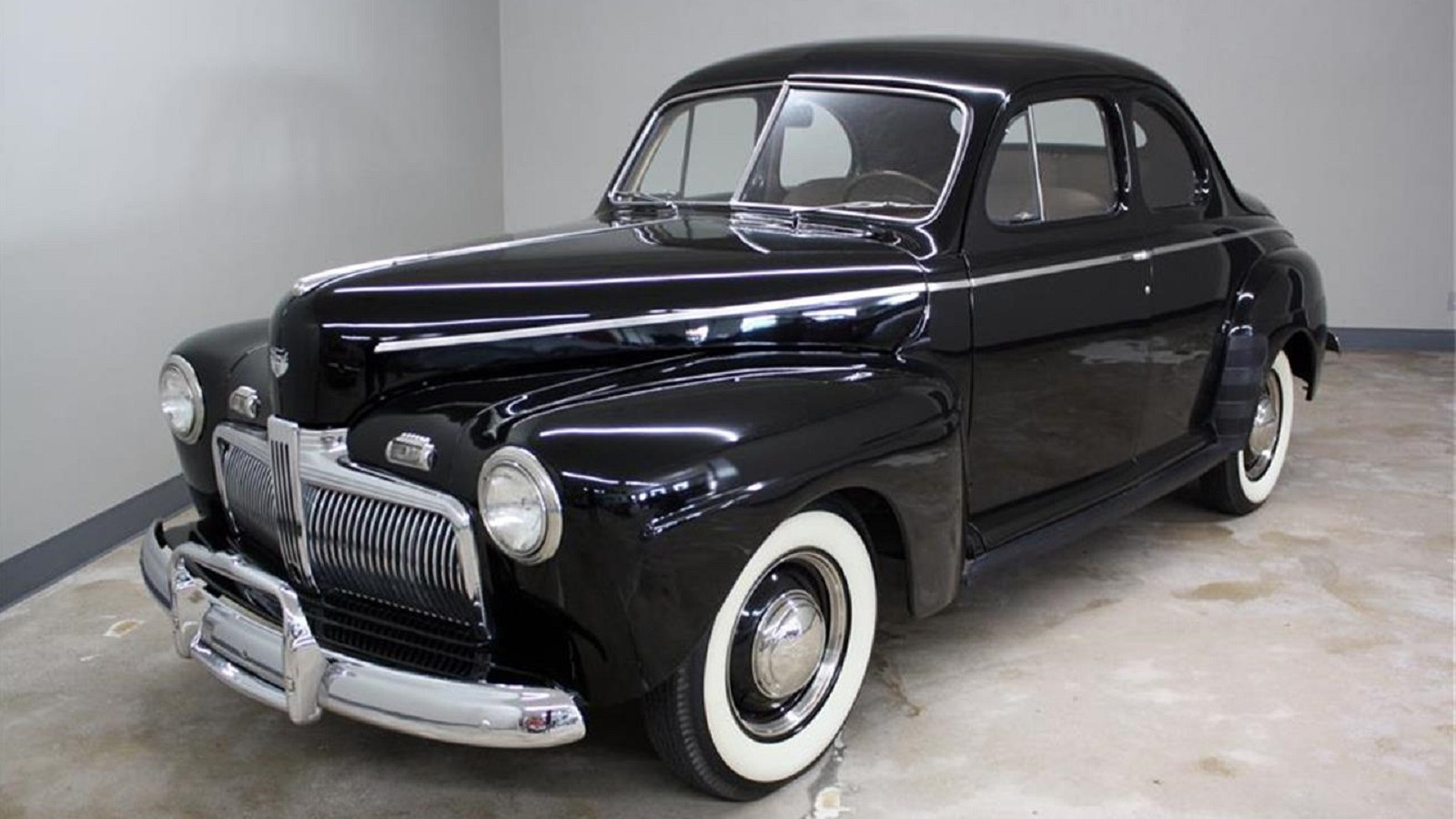 © Barrett-Jackson
© Barrett-Jackson -
 © Ford
© Ford -
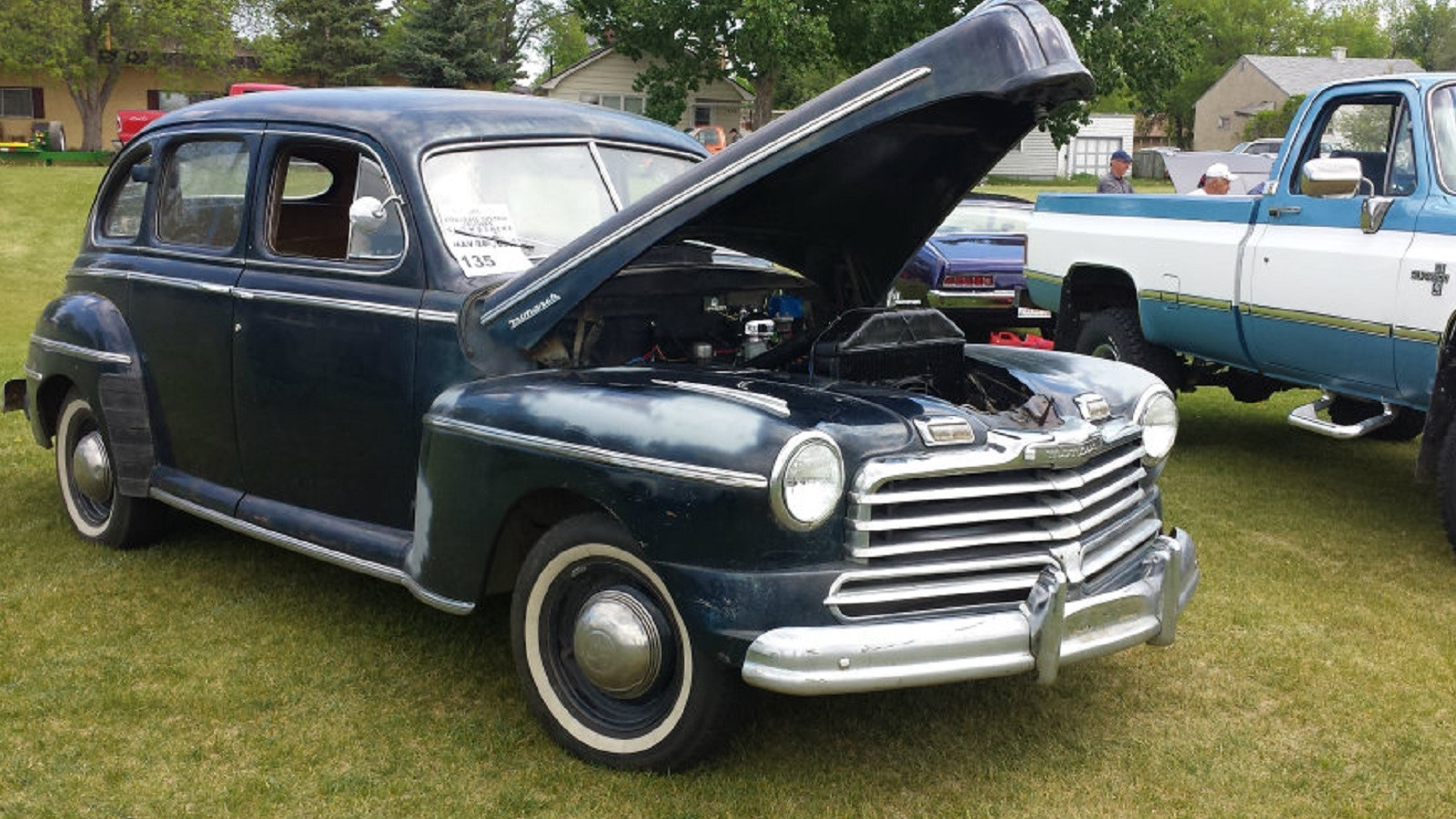 © Dave_7/Wikimedia Commons
© Dave_7/Wikimedia Commons -
 © Ford
© Ford -
 © Ford
© Ford -
 © Ford
© Ford -
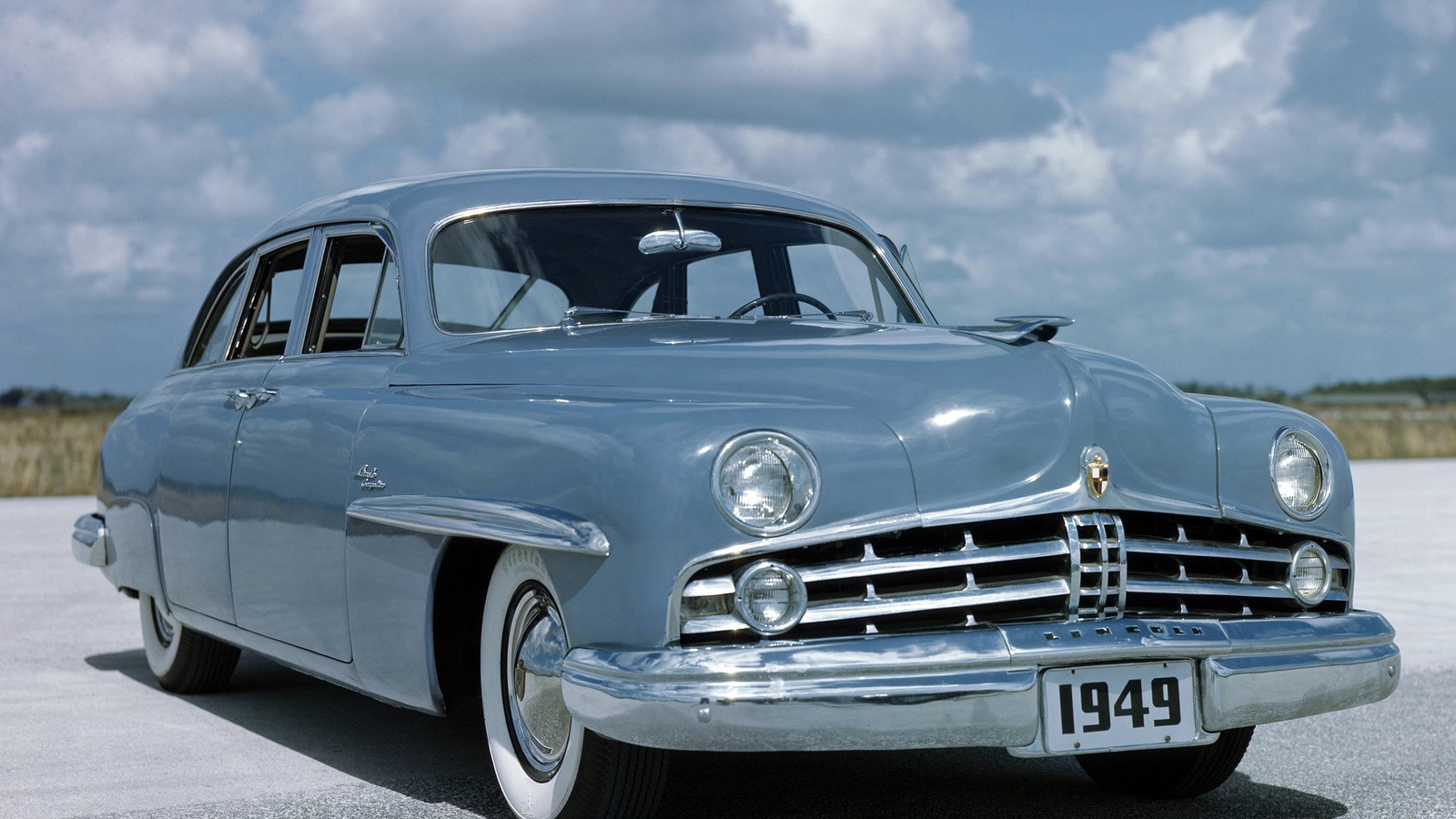 © Ford
© Ford -
 © Ford
© Ford -
 © Classiccars.com
© Classiccars.com -
 © Ford
© Ford -
 © Ford
© Ford -
 © Ford
© Ford -
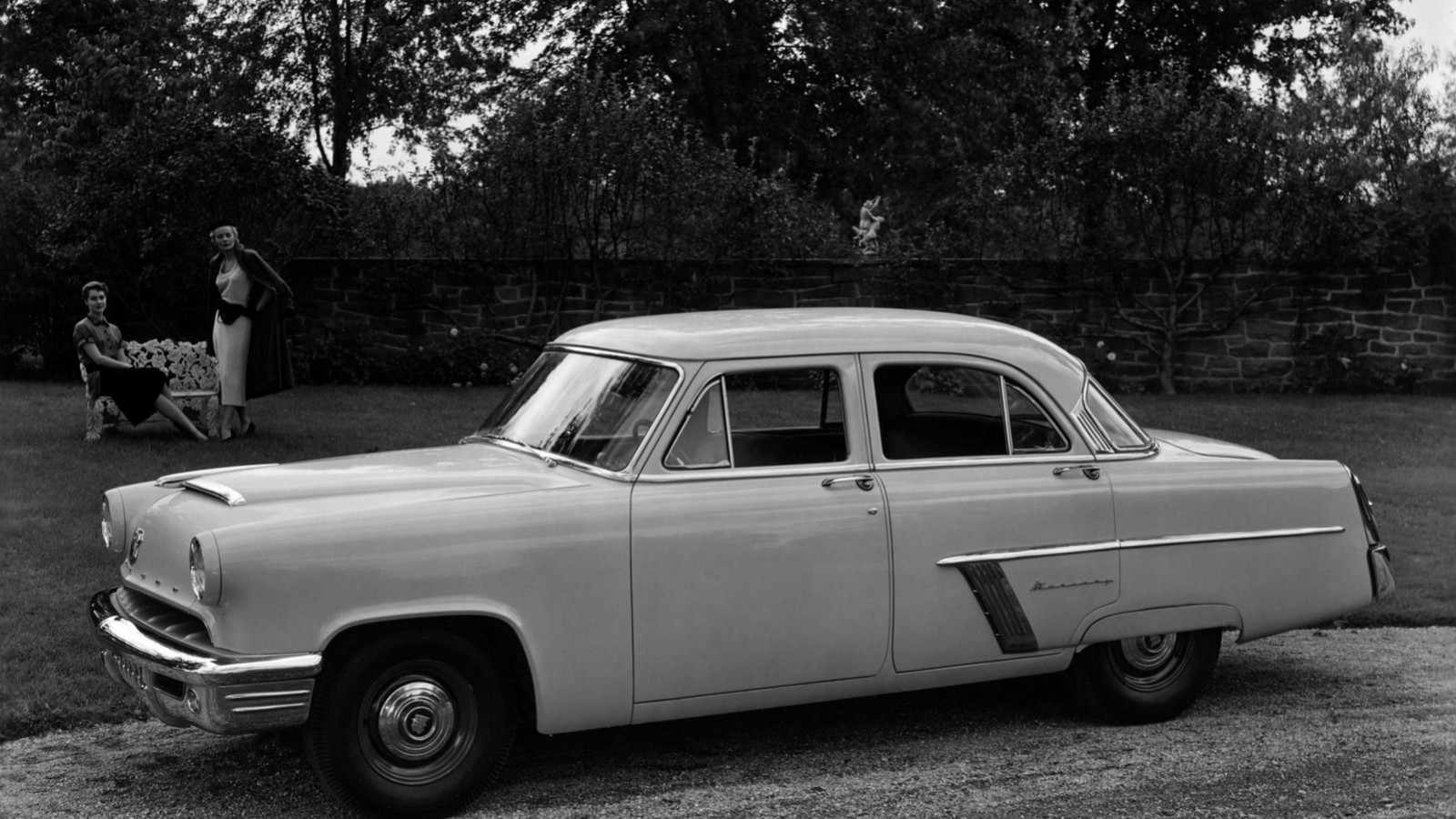 © Ford
© Ford -
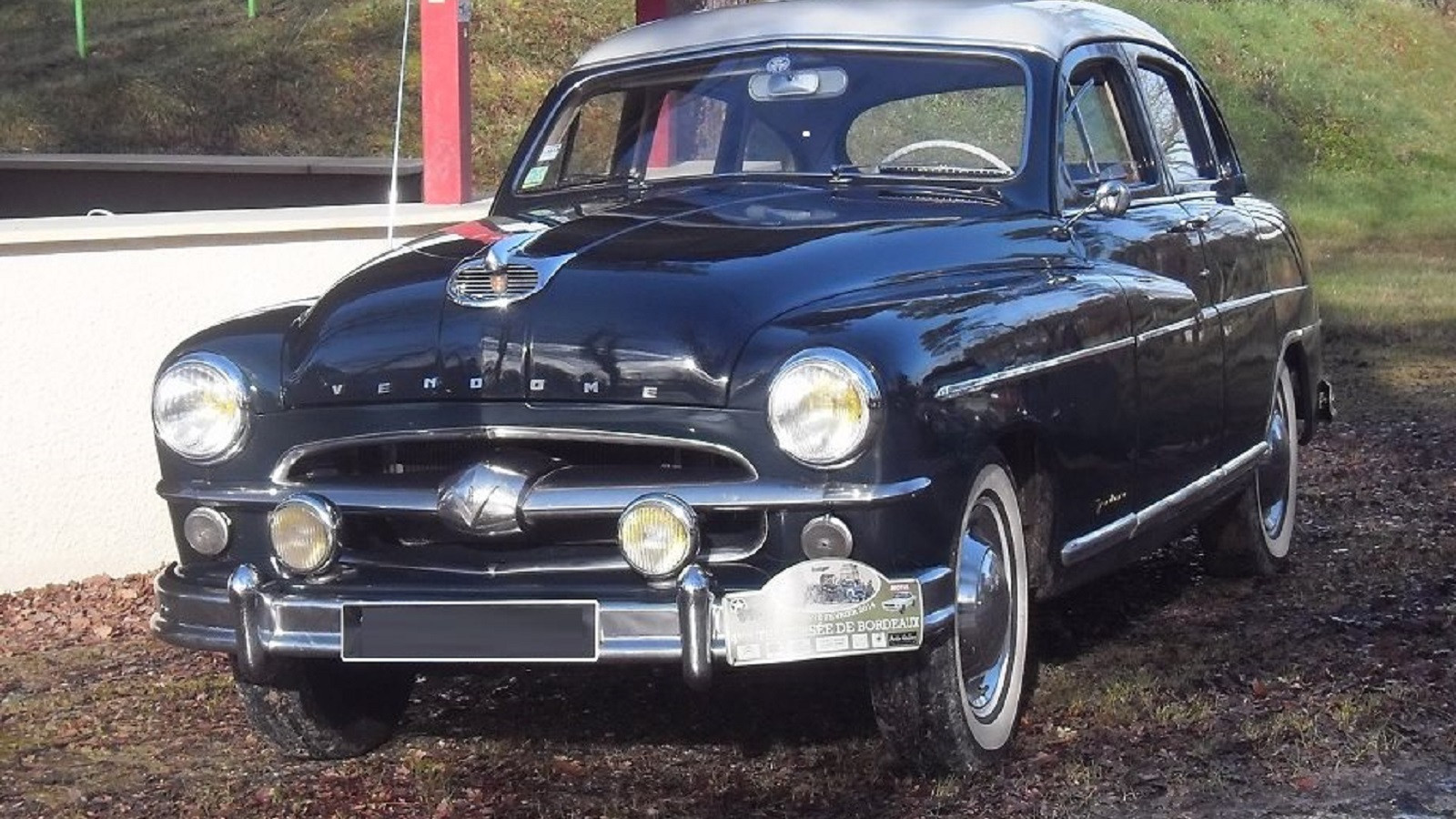 © Passionnément Classique
© Passionnément Classique -
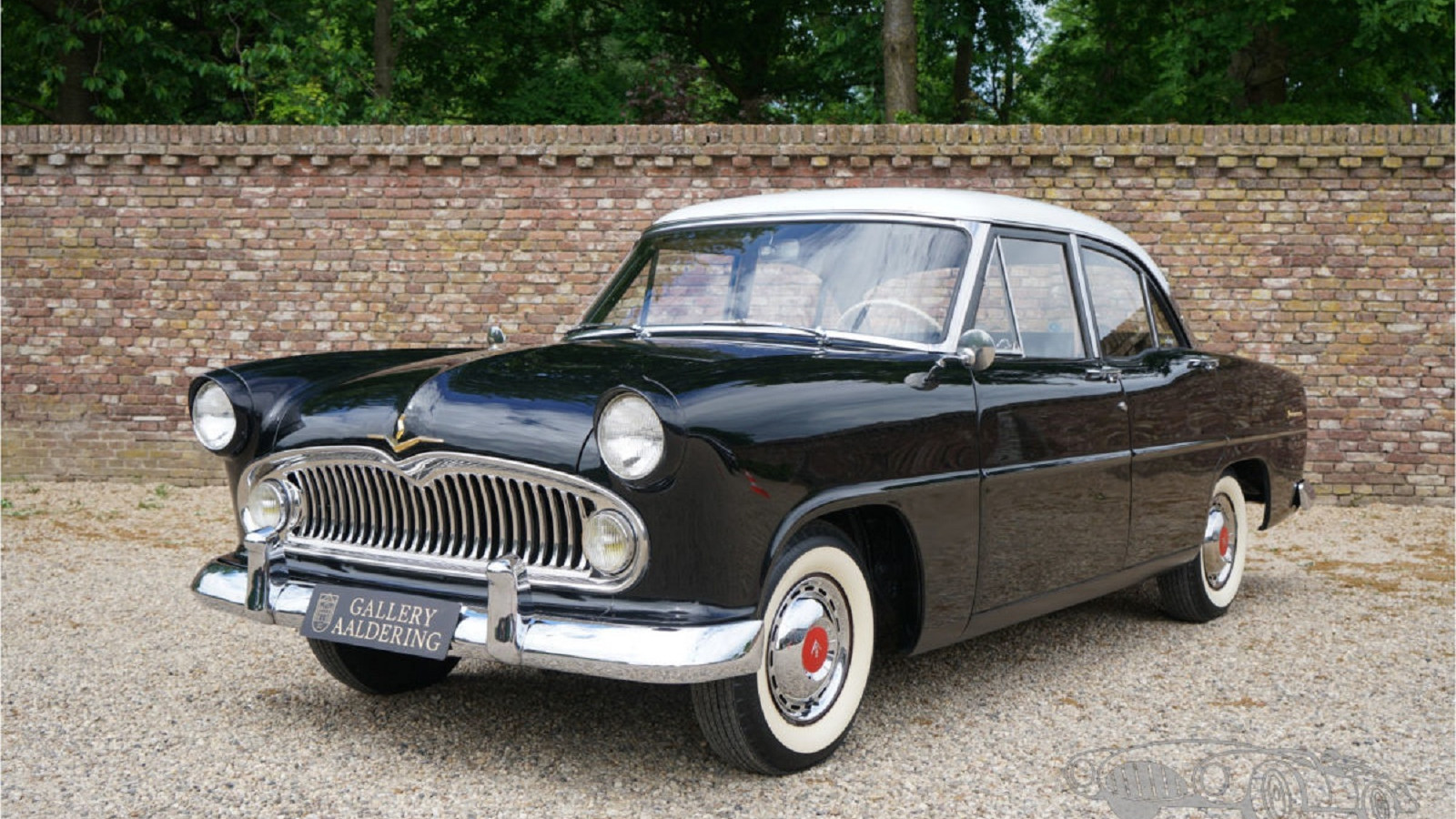 © Gallery Aaldering
© Gallery Aaldering -
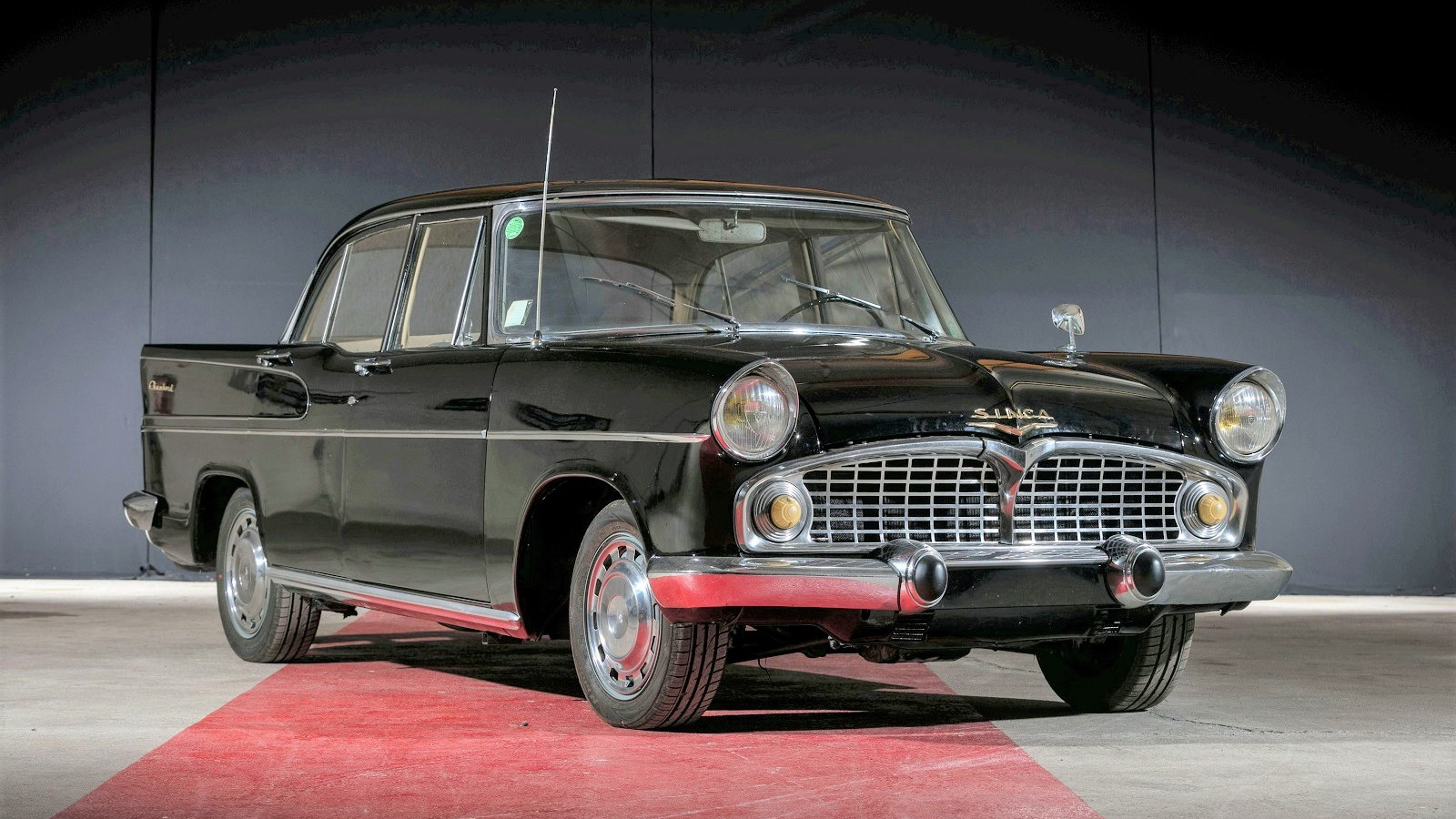 © Artcurial
© Artcurial
-
V8 for the masses
The Ford flathead V8 made its debut in 1932 and brought this previously exclusive engine configuration within the reach of most buyers in the US.
A simple design gave the flathead V8 superb reliability, and it soon proved easy to tune, making it even more popular.
More than any other engine, Ford’s flathead V8 made this engine configuration the design of choice in the USA.
Here are some of the cars in which it was used to such great effect from America and elsewhere, presented in chronological order.
-
1. Ford Model 18 (1932)
The Model 18 is where it all started for the Ford flathead V8.
While the humble Model B replaced the Model A, Ford introduced the V8 as an alternative to the existing four-cylinder motor. It was immediately popular and outsold its four-pot sister engine thanks to its easy-going power and performance. A result of this is that the Model 18 quickly became known simply as the Ford V8.
The first flathead V8 was a 221cu in (3.6-litre) motor with a modest 65bhp, but it was more than enough to give the Model 18 more verve than most US drivers were used to at the time.
Also used in the Model 40 launched alongside the B and 18, the V8 engine was soon offered with more power thanks to better carburettors and ignition timing.
-
2. Ford Australia Coupe Utility (1934)
The appeal of the Ford flathead V8 was not limited to American customers as Ford Australia put it to good use in its Coupe Utility.
Predating lifestyle SUVs and pick-ups by decades, this crossover model gave Australian farmers their beloved ‘ute’ that let them use it for work through the week, then head to church in it on Sunday.
The front half of the Utility Coupe was almost identical to the Model 18, while the rear had a simple load bed.
Strong low-down power from the flathead V8 and its ease of maintenance made it an ideal engine to run in rural Australia.
-
3. Ford Model 48 (1935)
Taking the Model 40 as its base, the Ford Model 48 was an updated and sleeker car brought in for 1935.
Part of the Model 40’s makeover was an improved version of the existing 221cu in (3.6-litre) flathead V8. This saw a substantial hike in power from the Model 18’s 65bhp to 90bhp for the Model 48.
With its added power, and 152lb ft of torque, the Model 48 was good for 85mph. It also saw off the four-cylinder engines in the US as the V8 became the standard engine for Ford’s cars and trucks in the American market.
-
4. Ford V8-62 (1935)
The V8-62 was a uniquely British take on the Ford V8 idea, which included scaling down the flathead design’s capacity to a modest 2.2 litres (136cu in) from the US version’s 3.6 litres (221cu in).
This held power back to 63bhp when US models were making 90bhp, but it was rated at 22hp for the purposes of British taxation.
Most V8-62s were sold with four-door saloon bodies built at Ford’s Dagenham plant in Essex and some were two-door convertibles.
The most desirable were the ‘woody’ estate models that were often bought by country estates to ferry guests from the railway station to the house and on shooting parties.
-
5. Ford Model 74 (1937)
Ford’s Model 74 was the entry point to its updated range for 1937 and it brought the smaller-capacity 136cu in (2.2-litre) V8 to the US from the UK.
Aimed at giving buyers a low-cost option, most preferred to spend a bit extra and have the power of the 221cu in (3.6-litre) V8 engine in the similar Model 78.
However, there was no arguing with Ford’s logic with the Model 74, because it gave them a V8-powered base model with a starting price of just $850. That was equivalent to around £115 in the UK at the time, or about the same as an Austin Seven Ruby saloon.
-
6. Ford Model 78 (1937)
Fortunately for drivers in the US, Ford added the Model 78 to its new line-up with an 80bhp version of the larger capacity 221cu in (3.6-litre) flathead V8.
Unsurprisingly, it was the car that buyers flocked to, because they were now used to the relaxed power of this engine from earlier models.
As well as the sleeker looks of the new models for 1937, Ford brought in improved cooling for the V8 engines thanks to a larger water pump.
With its mix of looks and power, the Model 78 became a staple of the hot rod scene in the post-war period.
-
7. Ford De Luxe (1938)
The name summed it up for this Ford model as the company looked to plug the gap between its mainstream models and upscale Lincoln brand.
While the exterior styling and cabin were distinct from the run-of-the-mill models, underneath there was the same 221cu in (3.6-litre) flathead V8 engine producing 85bhp.
What the De Luxe might have lacked in exoticism under the bonnet, it made up for with a wide range of body styles. Buyers could pick from two- and four-door saloons, a coupé, a convertible, a station wagon and even an ambulance from the Ford catalogue.
-
8. Mercury Eight (1939)
Similar to the De Luxe model of the previous year, Ford’s Mercury division aimed to offer a more upmarket range of cars to US buyers.
With styling influenced by the Lincoln Zephyr, the Mercury Eight used a 95bhp version of the by-now ubiquitous Ford flathead V8 motor, but with capacity increased to 239cu in (3.9 litres).
The same engine continued when the Mercury Eight was revised in 1941, and Ford introduced its Liquamatic semi-automatic transmission as an alternative to the existing three-speed manual gearbox in 1942. By then, Ford had sold more than 150,000 Mercury Eight models.
-
9. Ford 1941 (1941)
Ford took a very simple approach to its naming policy for the 1941 as this flathead V8-powered model was launched in the year of its name.
The company stuck with its familiar 221cu in (3.6-litre) V8 and the larger 239cu in (3.9-litre) unit.
These V8s were also joined by a 226cu in (3.7-litre) straight-six that was intended as an economy option.
However, buyers preferred their V8 motors, even if Ford did confuse garage mechanics by using five different types of distributor and three cooling fan designs in 1941 alone.
-
10. Ford 1942 (1942)
In 1942, Ford only managed four months of car production before its factories were given over to the war effort.
However, in this short period, Ford introduced a higher compression ratio for the flathead V8, which raised power to 95bhp for the Ford-badged cars.
Ford’s Mercury brand received uprated engines, too, with theirs achieving the magic 100bhp figures with a higher compression ratio.
The 1942 model did carry on in production, but it was as a military staff car and the remaining civilian stock was then limited to essential users only.
-
11. Ford 1946 (1946)
When the Second World War came to an end, the Ford flathead V8 was right there waiting to go.
Much of the car was the same as the 1942 under the skin, though there was new styling and the horizontal-bar grille.
At first glance, the flathead V8 looked unchanged, but it had an even higher compression ratio than the 1942 model’s, and the crankshaft was offset to the right of the block.
There were also improvements to the valve positioning and camshaft to give better refinement and allow the engine to rev more freely.
-
12. Monarch (1946)
To give its Canadian outpost a fighting chance at the more cost-conscious end of the market, Ford came up with the Monarch that was launched in 1946.
Similar in much of its build to the pre-war Mercury Eight, the Monarch used the same 239cu in (3.9-litre) flathead V8.
Unlike other Ford models of the immediate post-war period with the same engine that now enjoyed 100bhp power, the Monarch had a mildly detuned version that gave 95- to 97bhp, depending on exact specification.
When Ford introduced its all-new 1949 models, Monarch followed suit with a much more advanced car.
-
13. Ford V8 Pilot (1947)
Ford Britain revived the good old 221cu in (3.6-litre) V8 engine for the Pilot, which arrived in 1947.
It gave the company a car to take on the likes of Rover and Humber, but with a lazy 85bhp the Pilot was far from brisk.
However, the flathead V8 engine was strong and durable. As a result, and along with the simple pre-war design underneath the body, the Pilot lasted well beyond most of its rivals, so there is a high survival rate today for this 83mph saloon or much rarer estate.
-
14. Ford F-series (1948)
Ford’s long-running F-series pick-up range started in 1948 and cost-conscious buyers could choose a 226cu in (3.7-litre) straight-six engine.
However, more were tempted by the easy power provided by the 239cu in (3.9-litre) flathead V8 at the time of its launch. The V8 was in the same tune as Ford’s saloons, so that meant 100bhp for the F-series.
The Ford F-series was also offered with a 337cu in (5.5-litre) V8 motor producing 145bhp for the F7 and F8 versions of the pick-up.
These models were known as the ‘Big Job’ versions with a heavy-duty chassis capable of taking up to 22,000lb (9979kg), which made them ideal as fire engines and tow trucks.
-
15. Ford Vedette (1948)
At its launch in 1948, the Ford Vedette was the only V8-powered car built in France. The Vedette was intended as an upmarket model for European buyers, though it was designed in the US.
It was built at Ford’s Poissy factory in France using the 2.2-litre (134cu in) V8 flathead.
The Vedette may have had the bragging rights of a V8 engine, but its performance was mediocre and its fuel economy meant buyers stuck to their Citroëns, Peugeots and Renaults.
However, the sleek Comète coupé with the same engine at least had stylish looks to tempt buyers between 1951 and 1954.
-
16. Lincoln Cosmopolitan (1948)
The Lincoln Cosmopolitan lived up to its name with sleek looks when it was introduced in 1948 for the new 1949 model year.
Powered by the 337cu in (5.5-litre) engine also used in the Ford F-series pick-up with 145bhp, the Cosmopolitan was the first Lincoln model to come with a V8 engine.
Ford knew it needed to offer an automatic gearbox with the Cosmopolitan but didn’t have anything suitable. As a result, it ended up using a General Motors Hydramatic auto ’box.
When the second-generation Cosmopolitan arrived in 1952, Ford switched to its new overhead-valve Y-block V8 engine.
-
17. Ford 1949 (1948)
For the 1949 model year, Ford ushered in a completely new line-up of cars that consigned any similarity in appearance to the pre-war models to the bin.
However, the flathead V8 remained and Custom models were offered as Convertible or station wagon, while the coupé was part of the slightly lower order standard Ford range.
For such an important model that is reckoned to have saved Ford from financial disaster, the flathead was fittingly updated. The distributor was moved to the front of the block, and there was further improved cooling and the thermostat housings were now removable.
Ford’s version of the engine was 239cu in (3.9 litres) and offered 100bhp, while the Mercury version was now up to 255cu in (4.2 litres) and 112bhp.
-
18. Meteor (1948)
Sharing much of its design and looks with the Ford 1949 models, the Meteor was a name used in Canada for Ford’s cars aimed at the lower end of the market.
This didn’t prevent the cars from using the flathead V8, which was used in its 239cu in (3.9-litre) capacity with 100bhp for reliable, relaxing performance.
When Ford started to replace the flathead for the 1954 models in the USA, the Canadian Meteor stuck with the flathead V8 right through to the start of its 1955 range.
-
19. Lincoln EL (1949)
Ford had originally intended to use a V12 engine in the full-size EL model from Lincoln. However, post-war expediency meant a V8 was chosen instead, so the EL joined the Cosmopolitan in using Ford’s larger capacity 337cu in (5.5-litre) flathead V8 with 145bhp.
To give the EL a bit of its exclusivity back, Ford managed to squeeze 152bhp from the motor.
Buyers had the choice of a three-speed manual gearbox or a four-speed automatic transmission, which had to be bought in from General Motors, because Ford didn’t have a suitable auto of its own.
-
20. Ford 1952 (1952)
The writing was beginning to appear on the wall for the flathead V8 by the time Ford introduced its 1952 models.
The old stager remained in the line-up, offered as a 239cu in (3.9-litre) motor with 110bhp, which was achieved with better carburation and ignition timing.
The flathead kept powering this new Ford line-up through the introduction in 1954 of a new overhead-valve V8, which was also a 239cu in motor.
As a consequence, these were the last Ford-badged cars to use the flathead V8 from the factory.
-
21. Mercury Custom (1952)
For the 1952 model year, the Mercury Custom took over from the original Eight as the entry point to Ford’s off-shoot brand.
Offered as a two- or four-door saloon, a coupé and station wagon, by now the flathead V8 was the base engine for this model, with the new Y-block V8 for more upscale versions when this unit eventually came on-stream after the car’s launch.
The Custom used the 255cu in (4.2-litre) flathead V8 with 125bhp. The scoop on the Custom’s bonnet was purely decorative and did not supply cool air to the motor.
-
22. Mercury Monterey (1952)
As Ford shook up its entire range of cars for 1952, the Monterey became the top offering in the Mercury division.
It retained the faithful 255cu in (4.2-litre) flathead V8 with 125bhp as the main engine choice at its launch.
Ford also offered its new 256cu in (4.2-litre) Y-block V8, which provided 161bhp from the same capacity as the older flathead.
In 1944, a red Monterey Convertible became the 40 millionth car produced by Ford.
-
23. Ford Vendôme (1953)
For 1953, Ford in France expanded its range with the larger-engined Vendôme model that used the 3.9-litre (239cu in) V8 motor.
The engine was known as the ‘Mistral’ in this application and came with 93bhp to give the Vendôme a top speed of 92mph.
Like the Vedette with the smaller flathead V8, fuel consumption was a major decision for European drivers and the V8-powered Vendôme was simply too thirsty for it to sell in significant numbers.
-
24. Simca Vedette (1954)
In a deal to offload its French subsidiary, Ford sold the business, complete with factory, to Simca.
Soon after, the Vedette appeared using a flathead V8 in 2.4-litre (146cu in) capacity and with a modest 74bhp driving through a three-speed manual gearbox. An updated Vedette in 1957 saw power increased to 83bhp.
In the Simca, the flathead was known as the Aquilon, which translated to North Wind. Production of this Simca came to an end in 1961.
-
25. Simca Chambord (1959)
Simca’s Brazilian subsidiary became the last outpost for the by-now venerable flathead V8.
The same 2.4-litre (146cu in) Aquilon motor was used in the Brazil-only Chambord with 84bhp, and using a column-shift-operated three-speed manual gearbox.
By the time the Chambord ended production in 1966, bringing down the curtain on the flathead V8, the Simca’s engine was making 119bhp, enough to take the Chambord from 0-62mph in 14.3 secs and on to a 100mph top speed.
